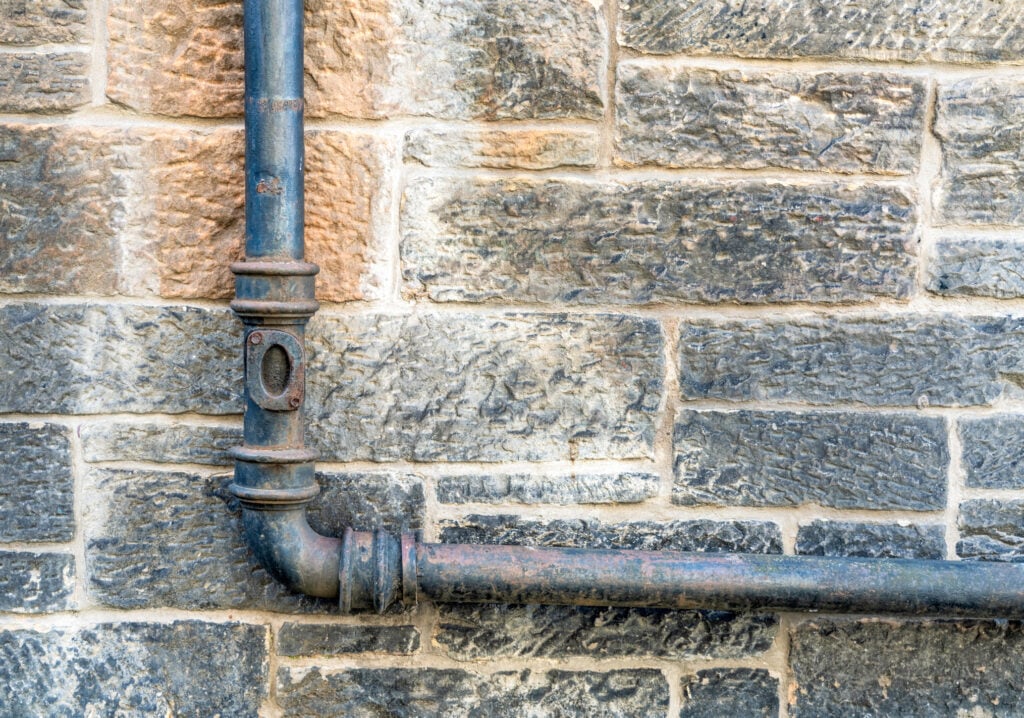For more than 150 years, American builders created plumbing systems in cities and homes using lead pipes. By 1900, 70% of cities with more than 30,000 population were running water through lead pipes. It took until 1986, an amendment to the Safe Drinking Water Act and a new understanding of the harm lead causes to eliminate this metal from drinking water pipes.
By the time lead stopped being used, there were nine million lead water pipes in place. It is now understood that exposure to lead in the water supply is unsafe, especially for children. When the conditions are right, lead leaches from the pipes and enters the drinking water supply. The Environmental Protection Agency has explicitly stated that there is no safe level of lead in drinking water.
You may have seen news headlines from 2014 and 2015, documenting the serious problem with lead pipe contamination in Flint, Michigan. Residents suffered from skin rashes, hair loss, reproductive problems, anxiety and mental health issues that could relate to their exposure to lead. The City of Flint finally corrected the source of its water to fix the problem but the damage was already done. Lead accumulates in the bones and soft tissues and is difficult to remove so many Flint residents may always have a burden of lead in their bodies.
America’s Lead Pipe Problems Are Nationwide
Until the lead is removed from American water systems, more communities may suffer similar problems to those of Flint. In fact, lead pipes are widespread in:
- Illinois
- Ohio
- New York
- New Jersey
- Wisconsin
- Pennsylvania
- Florida,
- North Carolina
- Michigan
- Georgia
- Indiana
- Louisiana
Many cities serve drinking water to customers through pipes made from or containing lead. The city in first place for having lead pipes is Chicago with 387,000 pipes made from this substance. In all, an estimated 170 million Americans have been exposed to levels of lead in their water that are high enough to cause health damage.
Homes and water treatment facilities built after 1986 typically used copper, PVC, chlorinated PVC, PEX or iron pipes instead of lead. Newer homes and more recently established cities will escape the lead problems of earlier generations.
Removing the Pipes and the Lead Problem
In 2024, the importance of updating the country’s water facilities has finally come to the fore. In October, the Environmental Protection Agency finalized a rule that mandates the replacement of all lead pipes in the next ten years. The EPA also announced $2.6 billion in funding to help make this change.
It is now well known that lead increases the risk of heart disease and cancer and affects brain development and behavior in children. Lowered IQ and learning and behavior problems can result from even low levels of lead in water.
How to Protect Your Family from Lead in Your Water Supply
Whether your water comes from a city supply or your own well, it is easy to find out if it contains lead. The Premium Water Test from ETR Laboratories provides a measurement of lead as well as 31 other metals or minerals. If you find out that you have lead or other metals in your water, an activated carbon filter (certified to ANSI Standard 53) or a reverse osmosis system (certified to ANSI Standard 58) can remove them. Be sure to look for a filter that specifically states that it removes lead.
Once you are providing healthy water for your family, you can look further for the source of the problem. If your home has lead in its plumbing system, replacing the pipes when possible may correct the problem. If your city’s water system still has lead in the pipes, then you will have to install a water treatment system in your home until the city’s pipes are replaced.
The solution to good water starts with an accurate, professional water test that enables you to design the right solution. To find out what’s in your water, purchase the Premium Water Test from ETR Laboratories today!

